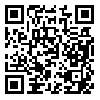Articles accepted at the time of publication
Back to the articles list |
Back to browse issues page
Assistant Professor of Persian Language and Literature Department at Arak University. , z.rajabi_id@yahoo.com
Abstract: (1447 Views)
Image schemas are macrocognitive patterns and structures that form the basis of our linguistic, mental and perceptual processes; and their function is based on the metaphorical-analogous relationship between visual experiences and frequent and everyday abstract concepts. In proverbs, like pictorial schemas, the use of metaphor-simile to convey a familiar mental concept between the speaker and the listener based on people's lived experiences is evident. Evans and Green have researched about image schemas and separated them into 8 types. One of these is the image schema of power. Since the precision in the structure of visual schemas can reveal the mental and cognitive structure of the users of a language, in the present research, the visual schema of power in Birjand's proverbs has been investigated in a descriptive-analytical way. Based on the results, out of the total of 1291 proverbs of Birjand, in 314 of them there are 7 types of visual schema of power; Most of them are of the type of blockage, enablement and counter force, which is proportional to the nature of the power schema; and found that between the frequency of the origin and destination areas of these schemas and cultural-environmental factors, and tools in removing obstacles, the importance of food and economic affairs to maintain survival, lack of plant diversity, desert and semi-desert climate of Birjand region has had a significant impact on the formation and continuation of proverbs with the schema of power, which emphasize the target areas of human relations, ethics and economy.
Article Type: مقالات علمی پژوهشی |
Subject:
Linguistics
Send email to the article author
| Rights and permissions | |
 |
This work is licensed under a Creative Commons Attribution-NonCommercial 4.0 International License. |






